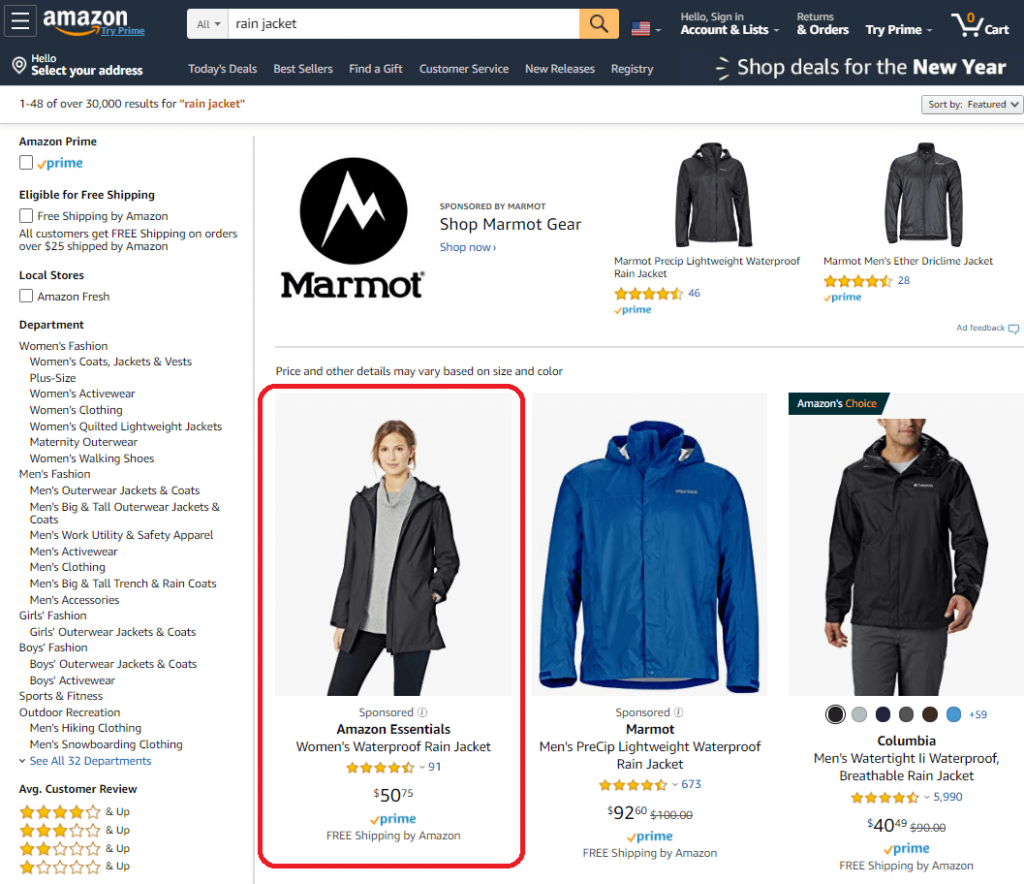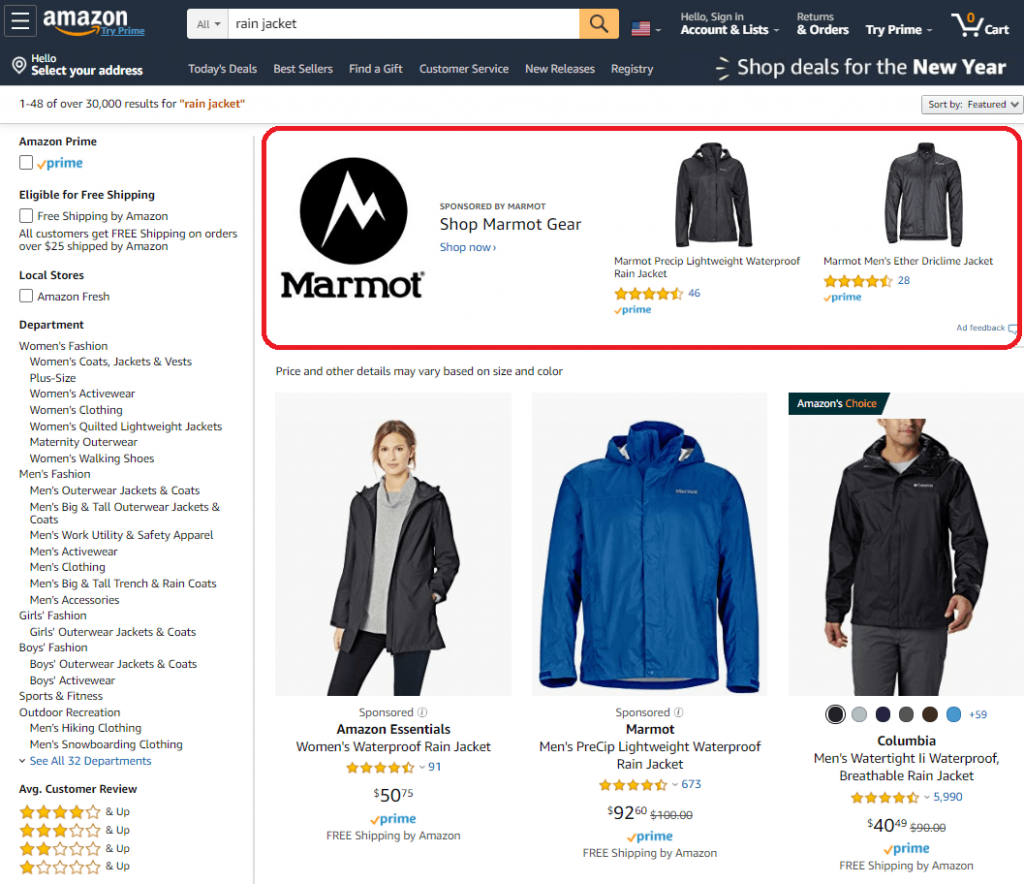With all the venues on which to advertise, sometimes choosing which platforms to use can get overwhelming. But if you want one where ads can be precisely placed at the right time thanks to the platform’s massive array of user information — Amazon has all your bases covered.
Love it or hate it, your audience is very likely on Amazon already. Amazon is a platform used by thousands of people every day to find everything from handmade soaps from artisan crafters to the newest gaming console to entire smart home systems. Advertising on this platform offers businesses brand new possibilities to expand their digital marketing efforts – and their revenue.
How did we get here?
In general, Amazon continues to take advertising market share away from Google and Facebook. But what does this look like?
Advertising has become a huge part of Amazon’s business, bringing in multi-billions of dollars each year. They were estimated to grow to nearly 50 percent market share in early 2019, while their market share is estimated to increase by 8.8 percent. While Google and Facebook notoriously utilize user data to boost their advertising platforms, Amazon’s access to user data is by far the most comprehensive and far-reaching, especially given its nature as an online marketplace. Google and Facebook have access to clicks — Amazon has access to direct purchases.
Even while we all know this, the scope of who and how far Amazon reaches is almost beyond human imagination. Each month, almost 200 million people visit Amazon, which sells over 12 million products and ships 5 billion items per year. In the United States, 95 million people have Amazon Prime memberships, which for $119 per year gives users free two-day shipping on most items sold on Amazon. When you consider that the population in 2018 was 327 million, that’s one-third of the entire country that have Amazon Prime memberships.
When you take all of this into account, it’s fair to consider that even a small-scale digital advertising campaign will have a further reach on Amazon than other platforms.
What are the options?
So, how do you get started advertising on Amazon? Overall, it’s a lot like other online advertising platforms, so no reinventing the wheel here.
The most well-known ad types on Amazon are sponsored product ads and sponsored brand ads. When you think of Amazon ads, this is likely the first thing that pops into your mind. The two are similar but with a pretty intuitive distinction.
Both work in the same way as Google search ads. For starters, keywords are one of the main targeting methods. For a sponsored product, you bid on specific keywords and when someone searches using one of your keywords in their query, your product listing has the opportunity to show above organic search results. It will have a “sponsored” designation, but it’s unobtrusive.

Example of Sponsored Product for “Rain Jacket” Search
Just like for sponsored products, sponsored brand listings are also activated by keywords. When a user searches using your designated keywords, an ad for your brand will appear at the top of the search results, above any individual product listings. This ad will typically include your logo, your brand name, and up to three relevant products. These ads are powerful because you have more space to feature your brand and more products for a user to choose. There are more options to customize them than with a specific product ad, whose format pretty much has to stay the same. If a user clicks on this ad, they’ll be taken to a landing page for your Amazon store.

Example of Sponsored Brand for “Rain Jacket” Search
Both types of listings, sponsored brands and sponsored products, operate on a cost per click model, which means you’ll only be charged when a user clicks on your ad.
But those aren’t the only types of advertising options available. Just like with Google Display Network, Amazon has its own demand-side platform (DSP), which allows you to serve desktop and mobile image ads, mobile banner ads, mobile interstitial ads, and even video ads that can be served outside of YouTube on Amazon Fire. Ads can appear on Amazon and on its partner websites, which include websites Amazon owns, like IMDB, Zappos, Good Reads, Ring, and Whole Foods, among others. Amazon’s audience targeting will leverage its own exclusive first-party data, and Amazon layers in some of its own safeguards as well to ensure your budget isn’t wasted on garbage clicks.
In most cases, Amazon display advertising campaigns will be managed by someone at the business directly or an agency they use (hi there!). In this case, there’s no minimum ad spend or management fees. However, for the low, low monthly ad spend of $35,000, Amazon will give you the opportunity to take part in its managed services offering, where advertising teams on Amazon will optimize your display campaigns for you.
Regardless if you sell any products online or not, carving out a portion of your advertising budget for Amazon in 2020 is a good idea to grow your brand and drive more revenue.
So, now what?
More than ever, digital advertising gives companies unprecedented access to reach potential customers. Not only that, but its effectiveness is far easier to measure and it’s first-party contextual audience targeting, much like Google’s in-market audience, delivers your ads to people at the exact moment they search for a product you may offer.
Regardless of how advertisers spend their budgets, what’s more important is how people see ads and buy from them. Sure, more advertisers are using Amazon and, subsequently, marketers have more competition for ads, but there’s so much greater visibility even considering this competition, especially if you build your campaigns well. As Amazon’s market dominance in e-commerce continues to grow, so does your ad’s effectiveness therein, as more eyes are put in play.
In our next post, we show you how to start advertising on Amazon and tips for optimizing your campaigns.




